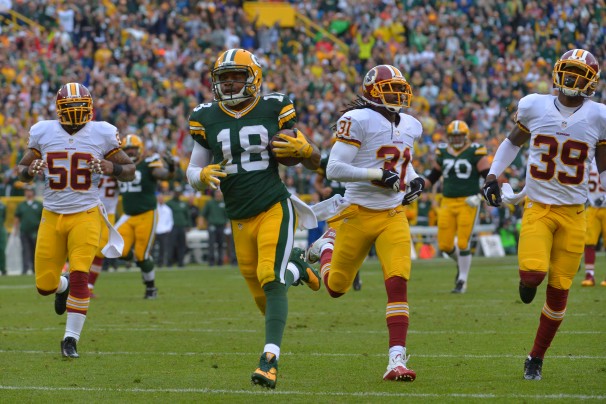The Packers and Ball Control Passing
 Fasten your seat belts because I'm about to say something that may shock you. Read closely and carefully, because I'm going to say it once:
Fasten your seat belts because I'm about to say something that may shock you. Read closely and carefully, because I'm going to say it once:
Troy Aikman said something really insightful during the Packers game on Sunday.
Try to absorb that revelation quickly, because I don't really like to think about the implications of what I just admitted and I'd really rather move on.
Aikman's point, which I believe he made during the Packers final, game-icing drive on Sunday, was this: the Packers are very adept at a unique form of offense he dubbed "ball control passing."
I think he's exactly right, and a column on Monday by Paul Imig of Fox Sports Wisconsin backs me up. Imig points out that in addition to a record tying passing day by Aaron Rodgers and a career high rushing day by James Starks, the Packers wide receiving corps also had a historic day, racking up the most yards after catch than any team in any game since the Houston Oilers in 1992. All told, receivers running after the catch accounted for 295 of Rodgers' 480 passing yards.
Of that 295, James Jones led the way with 96 after the catch. Cobb had 79 of his 128 after the catch, and the rest were scattered between the rest of the pass catchers on Sunday.
The Packers have been extremely productive after the catch so fr this year, but surprisingly, it's not Jones, Cobb, or even Jordy Nelson that's leading the Packers in YAC yards. It's jermichael Finley. Imig explains a stat that's almost impossible to believe.
The Packers' best yards-after-catch performer so far this season has been Finley. Of Finley's 121 receiving yards in the first two games, 116 of them have been after the catch. That means YAC has accounted for a whopping 95.9 percent of Finley's total receiving yards.
Even though he reported the numbers, Imig can hardly believe his own writing, as he explained on Twitter:
https://twitter.com/Paulimig/status/379823879960555520
https://twitter.com/Paulimig/status/379824131786559488
https://twitter.com/Paulimig/status/379824190162890753
https://twitter.com/Paulimig/status/379824245481537536
That's pretty incredible stuff, and it circles back around to Aikman's original point: the Packers are really good at ball control passing.
Since the Packers don't have to go deep downfield to have success in the passing game, it actually makes every receiver on the field that much more valuable. Since they're so adept at running after the catch, each of them can utilize their unique physical gifts to just get open as quickly as possible, only to worry about running later. Jordy Nelson can make plays with his length on the sideline, working his way open in small spaces with his long arms. James Jones can simply overpower smaller defensive backs. Randall Cobb uses his lightning quickness to make linebackers look foolish. And Jermichael Finley can just use his raw athleticism to do whatever it takes to find a way to catch the ball.
Nowhere was this more evident than in the Packers amazing game ending drive on Sunday. Robert Griffin III led the Redskins to their third touchdown with &;40 left in the fourth quarter, but a failed two point conversion left the score at 38-20. A short return by Randall Cobb gave the Packers the ball on their own 13 yard line.
The Packers managed to burn off the remainder of the clock, but how they did it was unusual. They ran 13 plays, but not counting Aaron Rodgers' three kneeldowns to end the game, five of the ten "real" plays were passes, including a stretch where the Packers threw four times in five downs. That's highly unusual clock-killing behavior, but it worked for the Packers because they're so good at getting open early and making things happen after the catch.
Is it sustainable? It's hard to say, but it's working like clockwork right now, and boy is it fun to watch.
